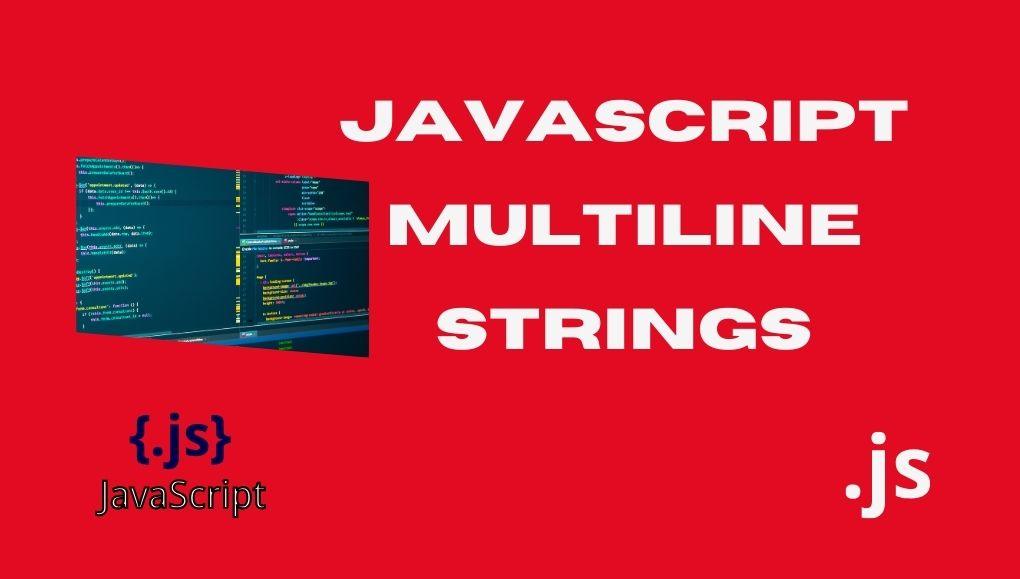Introduction
Welcome to the captivating world of JavaScript, where every line of code holds immense potential. In our journey today, we’ll unravel the mystery of JavaScript multiline strings.
These intriguing constructs, often overshadowed by other flashy features, are like hidden gems waiting to be discovered.
Whether you’re a coding novice or a seasoned pro, prepare to be enchanted by the wonders of multiline strings and how they can transform your code.

The Enigmatic JavaScript Multiline Strings
Multiline strings, also known as template literals, are like secret passages in JavaScript. They allow you to create strings that span multiple lines without any fuss.
Instead of the conventional single or double quotes, multiline strings are wrapped in backticks (`). It’s a subtle shift, but it can make your code look like a piece of art.
Unveiling the JavaScript Multiline Strings Syntax
To conjure a multiline string, enclose your text within those mystical backticks:
The code
const multilineSpell = `
This is a multiline string.
It dances gracefully across lines.
No need to force it into submission!
`;
See how there’s no need to escape line breaks or use the clumsy + for concatenation? Multiline strings respect your line breaks as they are.
The Art of Interpolation
But that’s not all. Multiline strings have a trick up their sleeves called interpolation. You can insert variables directly into your string using ${}. It’s like adding magical ingredients to your potion:
The code
const sorcererName = “Merlin”;
const magicalGreeting = `
Greetings, ${sorcererName}!
Step into the realm of enchantment.
`;
Unraveling the Mysteries of JavaScript Multiline Strings
The Charm of Clarity
One of the prime reasons to embrace multiline strings is clarity. Long strings can be as tangled as a bewitched forest when using the old concatenation method. Multiline strings, on the other hand, turn your code into a crystal-clear spellbook.
Weaving Spells with HTML
For the sorcerers of web development, multiline strings offer a portal to embed HTML or other magical incantations seamlessly into your JavaScript spells:
The code
const enchantedScroll = `
<div class=”scroll”>
<h1>Discover the Arcane Secrets</h1>
<p>Unlock the mysteries of the digital realm!</p>
</div>
`;
The Potion of Pristine SQL
If your adventures lead you to databases, you’ll appreciate how multiline strings keep your SQL spells pure and untainted:
The code
const potion = `
SELECT *
FROM spellbook
WHERE spell_level >= ‘5’;
`;
Crafting Spells with Multiline Strings
To wield multiline strings effectively, adhere to these enchanting practices:
Enchanting Indentation
Maintain consistent indentation within your multiline strings to keep the magic flowing smoothly. Align your spells with your code structure for maximum enchantment.
The code
const enchantedText = `
This is an enchanted
multiline spell.
`;
Taming the Length
Avoid crafting lines that stretch into infinity within multiline strings. If your incantation becomes too long, consider breaking it into smaller segments to keep the spell readable.
The code
const lengthySpell = `
This is an incredibly long line that should be split into smaller parts for better comprehension.
Otherwise, it might be a labyrinth to navigate.
`;
Beware of Backticks
Should you need to conjure a literal backtick (`) within your multiline spell, remember to escape it with a backslash (`).
The code
const spellWithBacktick = `
This is a backtick: \`
It must be tamed within a multiline spell.
`;
The Scrolls of Knowledge – FAQs about JavaScript Multiline Strings
Q1: Can I nest JavaScript Multiline Strings within other JavaScript Multiline Strings?
Absolutely! You can nest multiline strings within each other, creating layers of enchantment. Just ensure your indentation is spot-on to avoid any mystical mix-ups.
The code
const nestedScroll = `
This is the outer scroll.
${`
This is the nested scroll.
`}
`;
Q2: Do JavaScript Multiline Strings work everywhere in JavaScript?
Multiline strings are part of the spellbook known as ECMAScript 6 (ES6), and they thrive in modern JavaScript realms. If you wander into older territories or mystical environments, you may need to transmute your code using tools like Babel.
Q3: Do JavaScript Multiline Strings consume more magical energy than regular strings?
Fear not! Multiline strings are no more voracious in their magical appetite than regular strings. They bring clarity and elegance to your spells without draining your magical essence.
The Final Incantation
JavaScript multiline strings, also known as template literals, are your trusty companions in the enchanting world of coding. They enhance clarity, make HTML weaving a breeze, and keep your SQL spells pure. By mastering the art of multiline strings and following the enchanting practices, you’ll level up your coding magic.
In our journey, we’ve unveiled the syntax, explored their charms, and shared the secrets of crafting spells with multiline strings. Whether you’re a novice spellcaster or a seasoned mage, incorporating multiline strings into your repertoire will enhance your JavaScript spells and make your code a work of art.
So, as you embark on your coding quests, remember to wield multiline strings wisely. May your spells be elegant, your code clear, and your journey in the world of JavaScript be truly enchanting!
